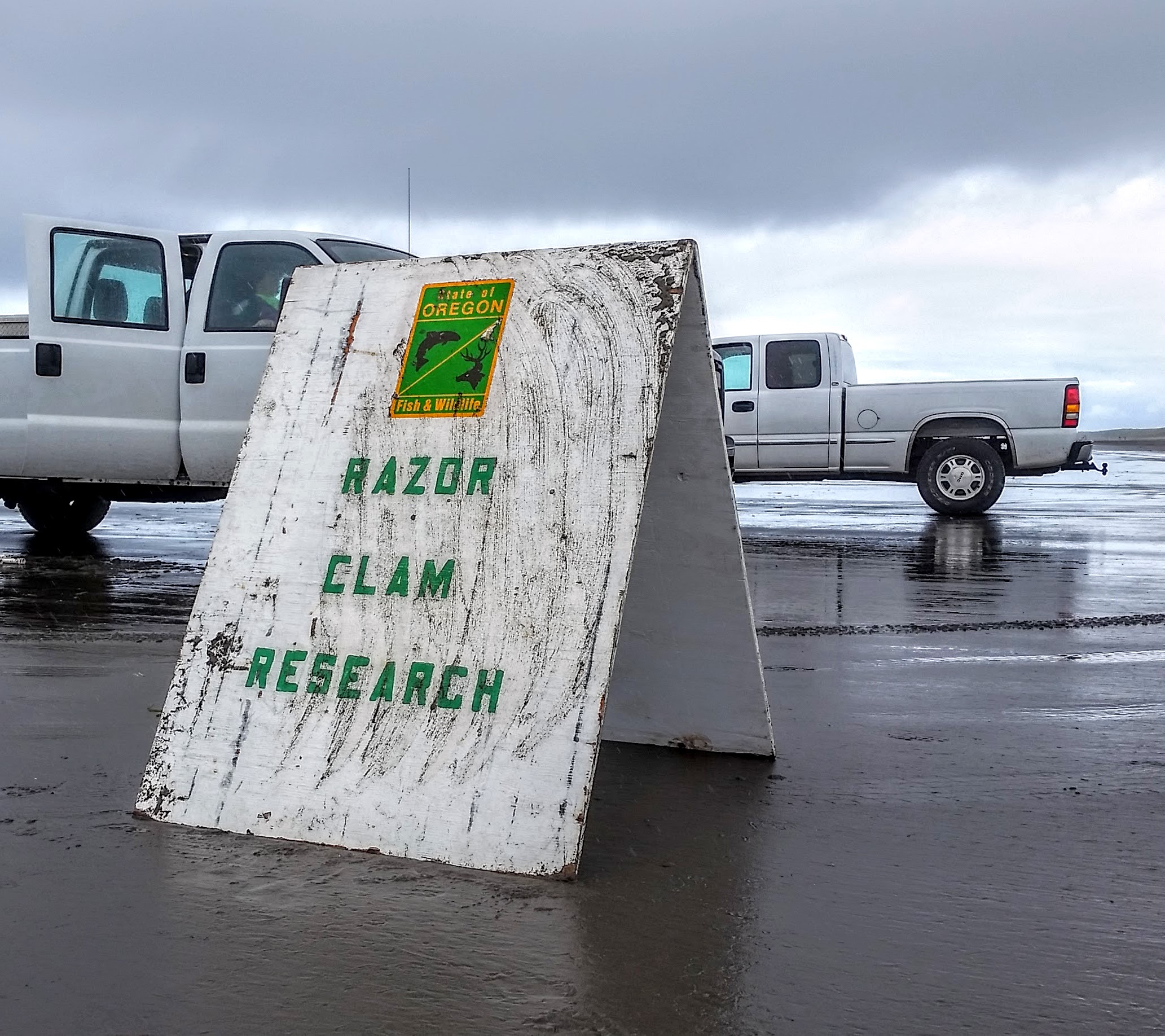The Buzz: Alsea Bay, Razor Clams in Astoria
Alsea Bay: With every UAV flight, SEACOR gets faster, more efficient, and apparently more repulsive (to seagulls). Despite the incessant whine of gullible gulls and their defensive attacks, we made several successful flights over clam and eelgrass beds along the north coast of Alsea Bay. The culmination of our experience thus far will hopefully yield our best results. Unfortunately, these were the last flights I will get to experience with SEACOR for the summer. Fortunately for the seagulls, it may be the last time we disturb the otherwise undisturbed shore of Alsea Bay with our buzzing predator-esque flying things.
Razor Clams in Astoria: Some of the best beaches in America for harvesting razor clams are found in Northern Clatsop county, Oregon. The stable, sandy beaches between the Tillamook river head to the Columbia river jetty west of Astoria are well known for harvests of over 2 million razor clams. A resource like this gets a lot of attention. To encourage recruitment (or the settling of offspring and immigrating adults) of future generations of clams, the State of Oregon at the behest of the ODFW close the beaches during mid-to-late summer to all recreational harvesting. Once the beaches are closed, its time for biologists to get to work. The monitoring site we offered to assist with was along Fort Stevens beach (south of Astoria near Warrenton). Trudging along the beach with a handcart full of hoses and an engine seems familiar… SEACOR’s megacoring work in clam beds is similar, except we have a boat, dry suits, and a vacuum instead of a pump. Working with exceptionally fatty clams (razors) that float instead of sink in water sounds like easy work, but you’d be mistaken to think it was. Pulling around heavy fire-hoses full of water up and down the beach for 5 hours bestowed us with a special brand of tiredness.
The Oregon coast and the varied weather that occurs here probably causes many to shy away from being outside for too long. Sand, mud, rain, sun, wind, and the experience of all of them simultaneously during field work reveals another side of the Northwest coast. For those who are patient (or for those who are forced to stick around) and for those that understand the region (or for those that find love living in it), the Pacific Northwest is unique and stunningly beautiful everyday. As quickly as you can drive 10 miles, you will find completely different conditions. You might drive from hot sun to stormy rain. You might find another reason to stick around or to love the liquid sun rays or fog and mud. Like a filter, a change in the weather simply adds another perspective.
Next Week: Garibaldi Days, Tillamook Field Work, SEACOR-et Project Pt. 1



![Robert Bradshaw [CC BY 2.5 (http://creativecommons.org/licenses/by/2.5), GFDL (http://www.gnu.org/copyleft/fdl.html) or CC-BY-SA-3.0 (http://creativecommons.org/licenses/by-sa/3.0/)], via Wikimedia Commons](https://cldup.com/koM_iQCqpa.jpg)

I absolutely love the video additions to this blog post! The gulls attacking the UAVs is interesting, I wonder if that could ever be severe enough to cause a UAV flight to be cut short?
You are incorporating the multi-media aspects of your project into the blog – how cool! Did you eat any razor clams this summer?